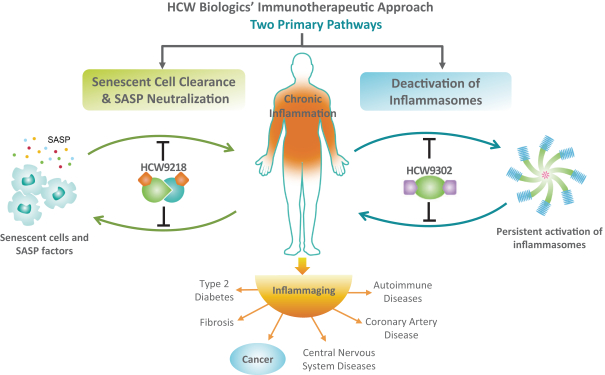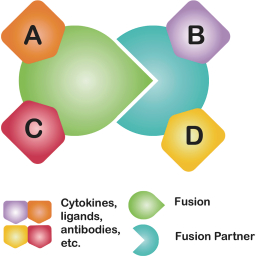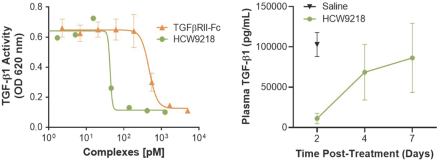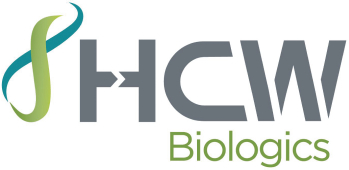therapies, and potentially those currently in development if they are approved. We are aware of several marketed and investigational products in our leading disease areas, including but not limited to:
We compete in the segments of the pharmaceutical, biotechnology, and other related markets that develop cancer therapies. There are many other companies that have commercialized or are developing cancer therapies, including large pharmaceutical and biotechnology companies, such as AstraZeneca/MedImmune, Bristol Myers Squibb, Merck, Novartis, Pfizer, and Roche/Genentech. We face significant competition from pharmaceutical and biotechnology companies that target specific tumor-associated antigens using immune cells or other cytotoxic modalities. These generally include immune cell redirecting therapeutics (e.g., T cell engagers), adoptive cellular therapies (e.g., CAR-Ts), antibody drug conjugates, targeted radiopharmaceuticals, targeted immunotoxin, and targeted cancer vaccines.
As we expand to other indications, we will focus on the treatment of fibrotic diseases, including idiopathic pulmonary fibrosis (“IPF”) and NASH. There are currently two (2) approved products for the treatment of IPF; Esbriet, marketed by Roche Holding AG (“Roche”) and Ofev, marketed by Boehringer Ingelheim GmbH. Companies currently developing product candidates in IPF include AbbVie, Galapagos, Indalo, Kadmon Holdings, Inc., Galecto Biotech, Inc., Roche, Liminal BioSciences. Inc., and Pliant Therapeutics. There are currently no FDA approved therapies for the treatment of NASH. There are a number of companies developing product candidates for the treatment of NASH including Intercept, Pfizer Inc., Gilead, Allergan, Novartis, AstraZeneca plc, Eli Lilly & Company, GlaxoSmithKline plc, Amgen, Inc., BMS, Johnson & Johnson, Merck & Co., Inc., Roche, Sanofi S.A., Takeda Pharmaceuticals, Novo Nordisk, Genfit SA, Madrigal Pharmaceuticals, Inc., Viking Therapeutics, Inc., Cirius Therapeutics, Inc., NGM Biopharmaceuticals, Akero Therapeutics, Inc., and Metacrine, Inc. Most of the drugs currently in development for NASH are focused on decreasing liver fat or improving liver inflammation as opposed to direct liver anti-fibrotic approaches.
With respect to our lead internally-developed product candidate, HCW9218, we are not aware of any other competing clinical-stage companies with a first-in-class immunotherapeutic that utilizes multiple mechanisms of action, including the cytokine-based activation of immune cells and neutralization of TGF-ß immunosuppression.
We are aware of several other companies developing programs that utilize IL-2 for the selective expansion of Treg cells, including Amgen Inc., Nektar Therapeutics (in partnership with Eli Lilly & Company), Roche, and Celgene Corporation (“Celgene”). We are also aware of other companies with research or preclinical-stage programs in this area, including Synthorx, Inc., Moderna, Inc., and Xencor, Inc. We are also aware of other companies with PD-1 agonist programs for the treatment of autoimmune diseases, including AnaptysBio, Inc., Celgene, and Eli Lilly & Company.
With respect to our second lead product candidate, HCW9302, we are not aware of other competing clinical-stage companies with a first-in-class immunotherapeutic for deactivation of inflammasomes and reduction of inflammatory cytokines they release through the activation of Treg cells.
We could see a reduction or elimination of our commercial opportunity if our competitors develop and commercialize products that are safer, more effective, have fewer or less severe side effects, are more convenient or are less expensive than any products that we or our collaborators may develop. Our competitors also may obtain FDA or foreign regulatory approval for their products more rapidly than we may obtain approval for ours, which could result in our competitors establishing a strong market position before we or our collaborators are able to enter the market. Key product features that would affect our ability to effectively compete with other therapeutics include the efficacy, safety, and convenience of our therapeutics, the ease of use and effectiveness of any complementary diagnostics and/or companion diagnostics, and price and levels of reimbursement.
Government Regulation
Government authorities in the United States, at the federal, state, and local level, and in other countries and jurisdictions, extensively regulate, among other things, the research, development, testing, manufacture,
119









